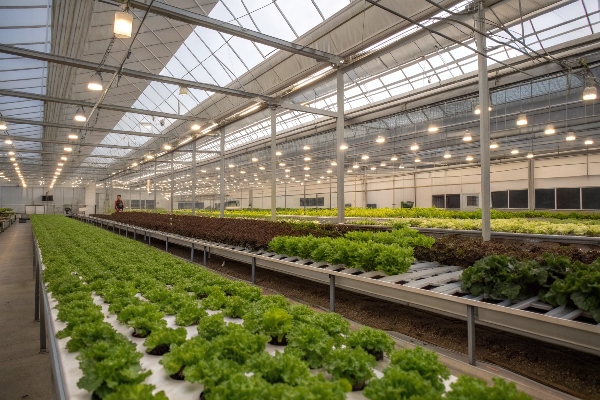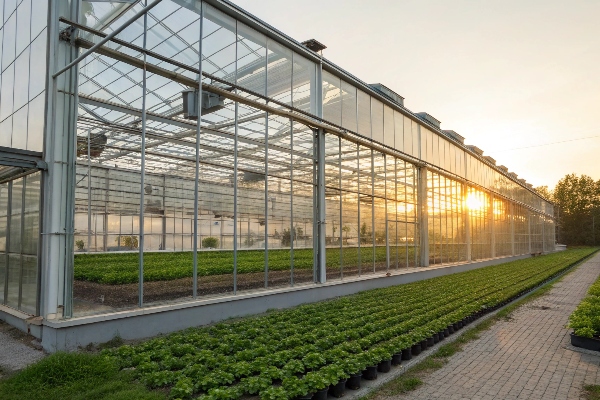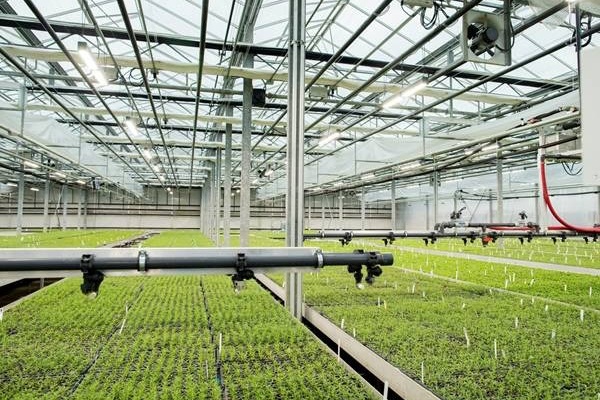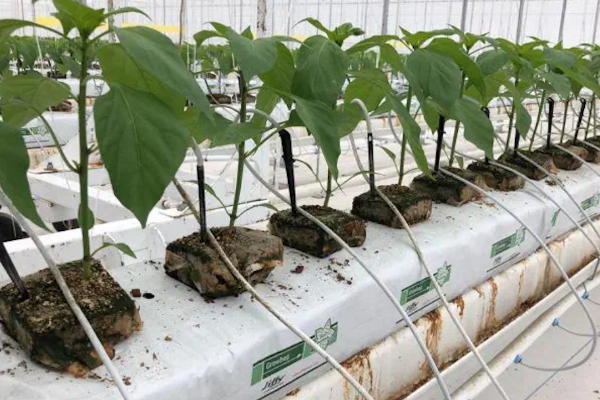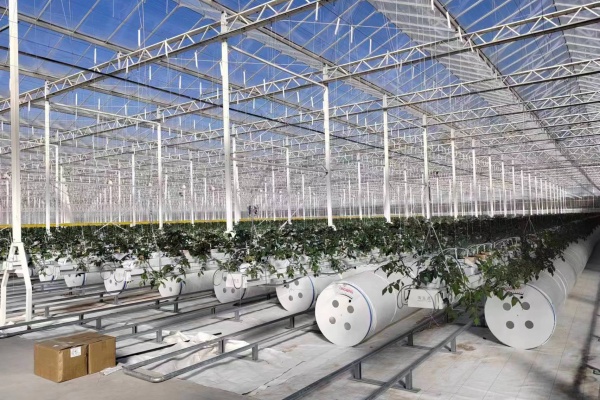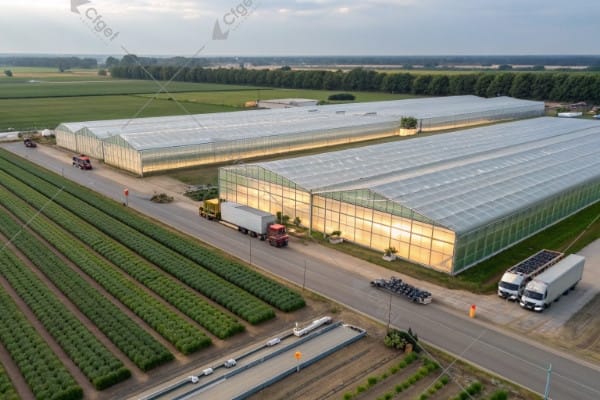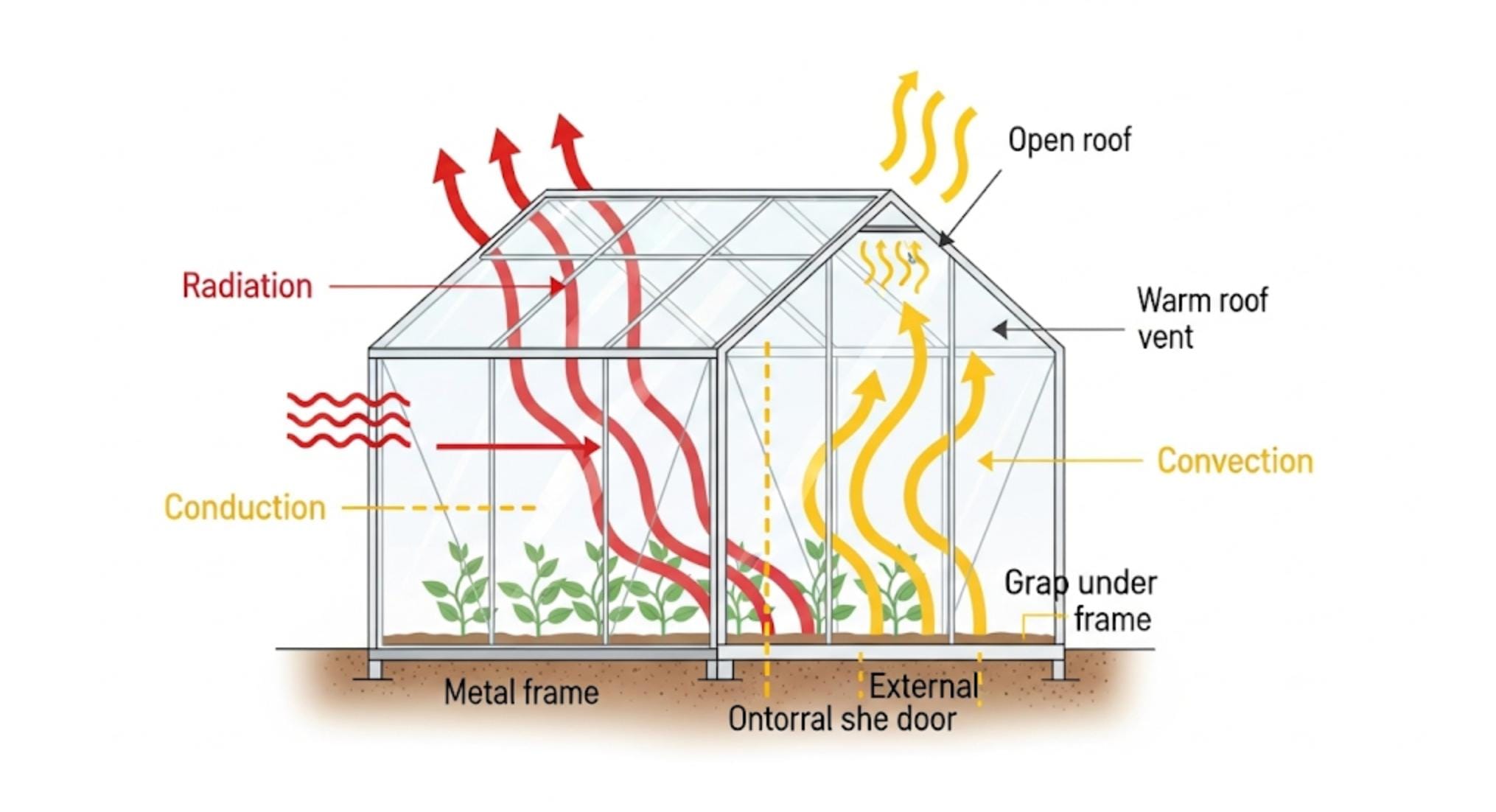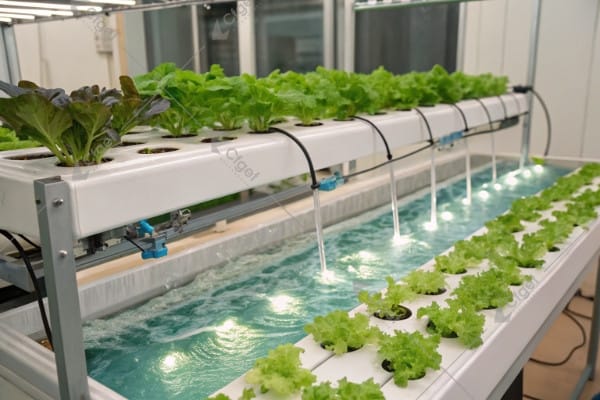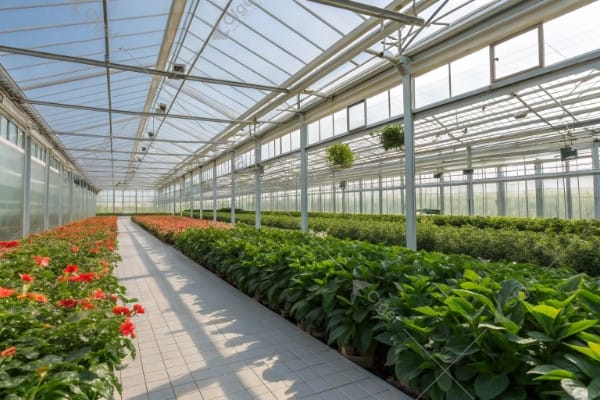Starting a commercial greenhouse feels overwhelming. You face complex decisions about systems, costs, and profitability. Many growers struggle with poor planning and end up with facilities that don’t deliver expected returns.
A successful commercial production greenhouse requires five integrated systems: structure, climate control, irrigation, lighting, and automation. When properly designed and managed, these systems can deliver 300-400% higher yields than traditional farming while providing year-round revenue stability and predictable harvests regardless of weather conditions.
Advanced greenhouse systems working together for optimal plant growth.
After helping over 500 commercial growers across 20 countries establish profitable greenhouse operations, I know what separates successful facilities from failed investments. The key lies in understanding how each component works together to create a controlled environment that maximizes both yield and profit.
Securing Year-Round Revenue: The Business Case for Controlled Environment Agriculture?
Traditional farming leaves you at the mercy of weather and seasons. One bad storm can destroy months of work and investment.
Controlled environment agriculture delivers consistent harvests 12 months per year, with yields 3-4 times higher than field farming. This translates to stable cash flow, predictable revenue streams, and the ability to meet supply contracts regardless of external weather conditions.
Greenhouse crops thrive while outdoor fields face weather challenges.
The financial advantages go beyond just yield increases. When I work with commercial growers, I show them how controlled environment agriculture transforms their entire business model. Instead of seasonal income peaks and valleys, you get steady monthly revenue. This consistency allows for better financial planning, easier loan qualification, and more attractive investment opportunities.
Market timing becomes your competitive advantage. While field growers flood markets during harvest season, driving prices down, greenhouse operations can time harvests for peak demand periods. I’ve seen growers increase their per-unit selling price by 40-60% simply by harvesting when supply is naturally low.
Labor efficiency improves dramatically in controlled environments. Workers can harvest year-round instead of facing seasonal unemployment. This stability helps you build skilled teams and reduces training costs. Equipment utilization also increases since machinery works 12 months instead of just during growing seasons.
Risk reduction represents another major benefit. Weather insurance becomes unnecessary when weather doesn’t affect your crops. Pest and disease pressure drops significantly in controlled environments, reducing both crop losses and chemical input costs. Quality consistency improves, leading to better relationships with buyers and premium pricing opportunities.
The 5 Essential Systems for Maximum Yield & Efficiency?
Building a greenhouse without understanding system integration leads to poor performance and wasted money. Each system must work with others.
Five critical systems determine greenhouse success: structural framework, climate control, irrigation management, supplemental lighting, and automation controls. These systems must be sized and integrated properly to achieve optimal plant growth while maintaining operational efficiency and cost control.
The five critical systems that make commercial greenhouses profitable.
The structural framework provides the foundation for everything else. I always start with wind and snow load calculations specific to your location. Underestimating these forces leads to structural failures that can destroy entire crops. The framework must also support equipment loads from heating, cooling, and irrigation systems.
Climate control systems maintain optimal growing conditions regardless of outside weather. This includes heating systems for cold periods, cooling and ventilation for hot weather, and humidity management year-round. I size these systems based on your crop requirements and local climate extremes. Proper sizing prevents energy waste while ensuring plants never experience stress from temperature or humidity fluctuations.
Irrigation systems deliver water and nutrients precisely when plants need them. Modern commercial greenhouses use closed-loop systems that recycle drainage water, reducing waste and nutrient costs. I design these systems with multiple zones to accommodate different crop stages and varieties within the same facility.
Supplemental lighting extends growing seasons and increases yields in low-light periods. LED systems now offer energy-efficient options that provide specific light spectrums for optimal plant growth. The key is calculating your daily light integral requirements and sizing systems accordingly.
Automation controls tie everything together, monitoring conditions and adjusting systems automatically. This reduces labor costs while maintaining precise environmental control. Modern systems can be monitored remotely, allowing you to manage multiple facilities from anywhere.
| System | Primary Function | Key Considerations |
|---|---|---|
| Structure | Support & Protection | Wind/snow loads, equipment capacity |
| Climate Control | Temperature & Humidity | Heating/cooling capacity, energy efficiency |
| Irrigation | Water & Nutrients | Uniformity, recycling capability, automation |
| Lighting | Photosynthesis Support | Light intensity, spectrum, energy consumption |
| Automation | System Integration | Monitoring capability, remote access, reliability |
From CAPEX to Profit: A Financial Planning Guide for Greenhouse Developers?
Many greenhouse projects fail because developers underestimate total investment requirements and overestimate early returns. Proper financial planning prevents costly mistakes.
Commercial greenhouse development typically requires $25-45 per square foot in initial investment, with payback periods of 3-5 years when properly planned. Success depends on accurate CAPEX estimation, realistic revenue projections, and adequate working capital for the first 18 months of operation.
Financial planning charts showing investment timeline and profitability projections.
Initial capital requirements extend far beyond just the greenhouse structure. Site preparation often costs $3-8 per square foot depending on soil conditions and utility access. Utility connections for electricity, water, and sometimes natural gas add another $2-5 per square foot. Many developers forget about permitting costs, which can range from $5,000 to $50,000 depending on local requirements.
Working capital needs often catch new operators off guard. You’ll need 12-18 months of operating expenses available before seeing significant revenue. This includes labor costs, utilities, seeds or seedlings, nutrients, and maintenance supplies. I recommend having at least $8-12 per square foot in working capital beyond your construction budget.
Revenue projections must be realistic and based on actual market conditions in your area. I help clients research local pricing for their intended crops throughout the year. Many developers use peak pricing for annual projections, which leads to disappointment. Conservative estimates based on average pricing provide better planning foundations.
Operating costs vary significantly by crop and location. Energy typically represents 15-25% of operating expenses in most climates. Labor costs range from 25-40% depending on automation levels. Supplies including seeds, nutrients, and pest control products usually account for 15-20% of expenses.
Cash flow timing requires careful attention. Most crops have 60-120 day cycles from planting to harvest. Payment from buyers often takes 30-60 days after delivery. This means your cash is tied up for 3-6 months per crop cycle. Planning for these delays prevents cash flow problems that force facility closures.
Scaling Operations: A Management Blueprint for Large-Scale Greenhouses?
Small greenhouse management doesn’t scale to large commercial operations. Different systems and approaches become necessary as facility size increases.
Large-scale greenhouse operations require standardized procedures, skilled management teams, and robust data systems to maintain efficiency. Facilities over 5 acres need specialized roles including head growers, climate managers, and production coordinators to achieve optimal performance and profitability.
Professional management teams coordinating large-scale greenhouse operations.
Organizational structure becomes critical as operations grow. Small facilities can operate with 2-3 people handling multiple roles. Large operations need specialized positions with clear responsibilities. I recommend establishing department heads for production, maintenance, and quality control once you exceed 3 acres of growing space.
Standard operating procedures ensure consistency across large facilities. Every task from seeding to harvesting needs documented procedures that any trained employee can follow. This prevents quality variations and reduces training time for new workers. I help facilities develop procedure manuals that cover daily, weekly, and seasonal tasks.
Data management systems become essential for tracking performance across large operations. You need systems that monitor plant health, environmental conditions, input costs, and harvest yields by section. This data helps identify problems early and optimize resource allocation. Modern greenhouse management software can integrate with climate control systems to provide comprehensive oversight.
Quality control systems must scale with facility size. Large operations need formal inspection procedures, harvest standards, and post-harvest handling protocols. Consistent quality becomes more challenging as volume increases, but buyers expect the same standards regardless of your facility size.
Staff training programs ensure everyone understands their role in maintaining quality and efficiency. Large facilities benefit from formal training curricula that cover safety, procedures, and quality standards. Cross-training helps maintain operations when key personnel are unavailable.
Performance monitoring systems track key metrics across the entire operation. I recommend monitoring yield per square foot, energy consumption per unit produced, labor hours per harvest unit, and quality rejection rates. These metrics help identify areas for improvement and benchmark performance against industry standards.
Conclusion
Commercial greenhouse success requires integrated planning, proper system design, realistic financial projections, and scalable management approaches for long-term profitability.

